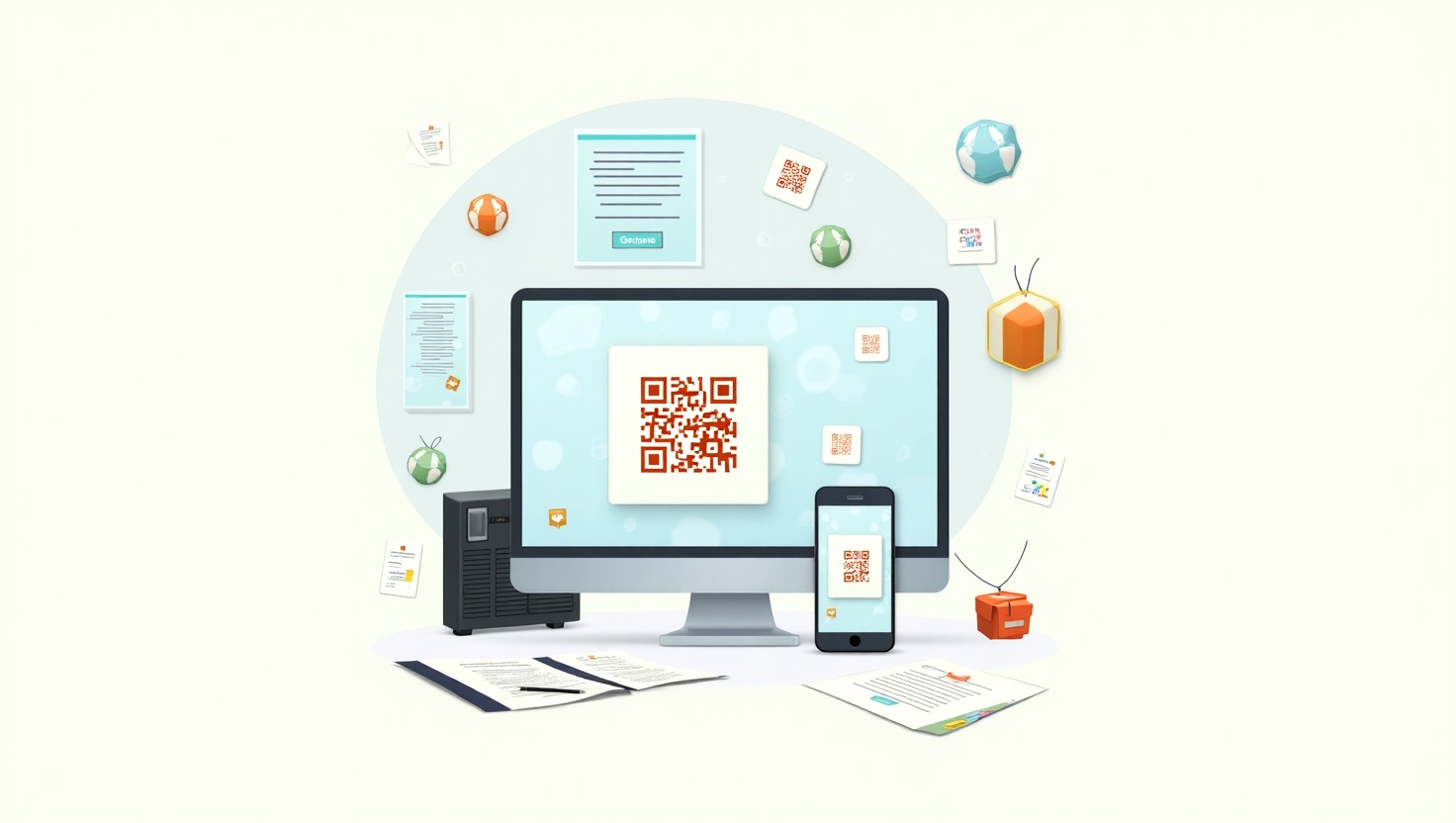Easy guide on how to make a QR code. Generate and customize your own QR codes for any use.
QR codes, those quirky square barcodes, have become ubiquitous in our digital age. From restaurant menus to website links, they offer a quick and convenient way to access information. But how do you create your own? This blog post will guide you through the simple process of making a QR code, even if you're a complete beginner.
What is a QR Code?
Before we dive into the "how," let's briefly understand what a QR code is. QR stands for "Quick Response." It's a two-dimensional barcode that can store various types of data, including:
- Website URLs: Direct users to your website or a specific landing page.
- Text: Display simple messages or instructions.
- Contact Information: Share your contact details (phone number, email, etc.).
- Wi-Fi Network Credentials: Allow guests to easily connect to your Wi-Fi.
- Location Coordinates: Share a specific address or location.
- Social Media Profiles: Link to your Facebook, Instagram, or other social media accounts.
Why Create a QR Code?
QR codes are incredibly versatile and can be used for various purposes:
- Marketing: Promote your products or services by linking to your website or special offers.
- Networking: Share your contact information quickly and easily.
- Convenience: Provide easy access to menus, event details, or other information.
- Efficiency: Streamline processes by directing users to online forms or payment pages.
How to Make a QR Code: Step-by-Step Guide
Creating a QR code is surprisingly simple. Here's how:
1. Choose a QR Code Generator:
Many free and paid QR code generators are available online. Some popular options include:
- QR Code Generator (qrcode-monkey.com): A user-friendly option with customization features.
- The QR Code Generator (the-qrcode-generator.com): Provides a variety of QR code types.
- Google Chrome's built in QR generator. If you are on a website in chrome, you can click the share button, and select "create QR code".
2. Select the Type of Content:
Most QR code generators will offer a range of content types. Choose the one that best suits your needs. For example, if you want to link to your website, select "URL."
3. Enter Your Data:
Enter the data you want to encode in the QR code. This could be your website address, text message, contact information, or other relevant data.
4. Customize Your QR Code (Optional):
Some QR code generators allow you to customize the appearance of your QR code. You can:
- Change the colors.
- Add a logo.
- Adjust the size.
- Change the shape of the little squares within the QR code.
5. Generate and Download Your QR Code:
Once you've entered your data and customized your QR code (if desired), click the "Generate" or "Create QR Code" button. The generator will create your QR code, which you can then download as an image file (e.g., PNG, JPG, SVG).
6. Test Your QR Code:
Before distributing your QR code, it's essential to test it to ensure it works correctly. Use a QR code reader app on your smartphone to scan the code and verify that it directs you to the intended destination.
Tips for Effective QR Code Usage:
- Make it visually appealing: Customize your QR code to match your brand or style.
- Place it strategically: Position your QR code where it's easily visible and accessible.
- Provide clear instructions: Tell users what to do with the QR code (e.g., "Scan to view our menu").
- Ensure the landing page is mobile-friendly: Optimize the content linked to your QR code for mobile devices.
- Track your QR code's performance (if possible): Some QR code generators offer analytics to track scans and user engagement.
Conclusion:
Creating a QR code is a simple and effective way to share information and engage with your audience. By following the steps outlined in this guide, you can easily create your own QR codes and unlock their potential for marketing, networking, and more.
